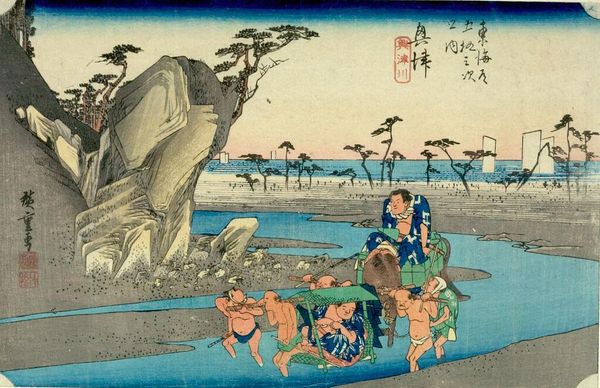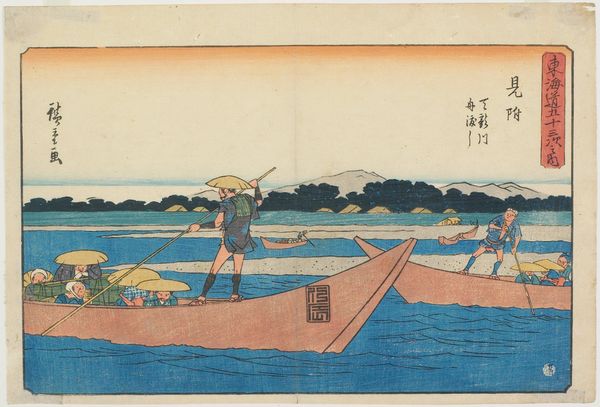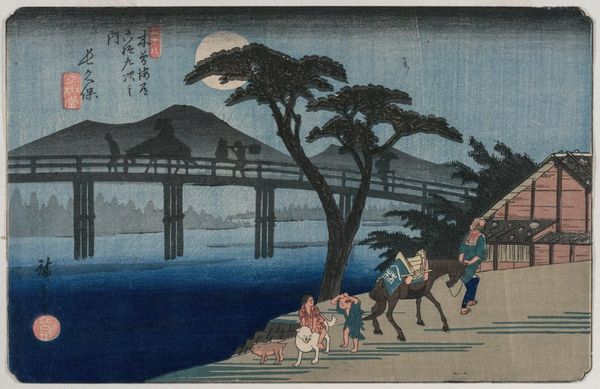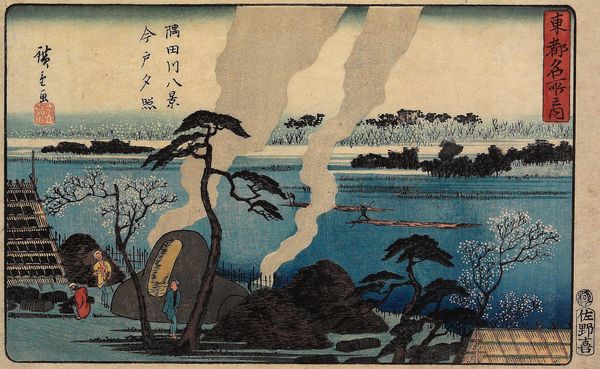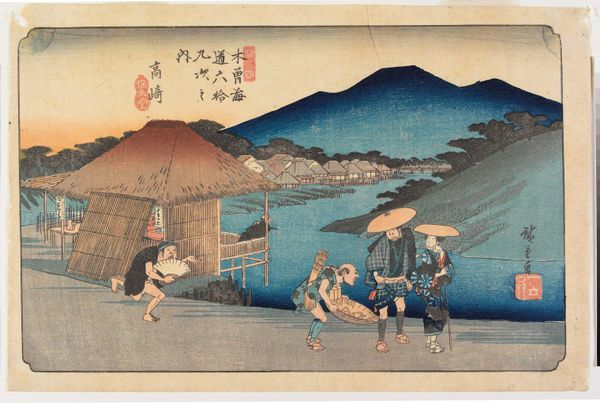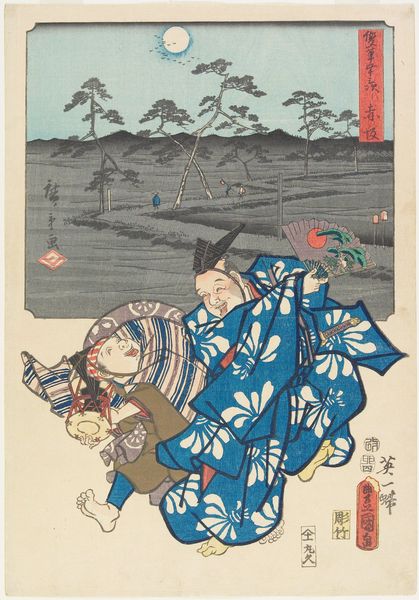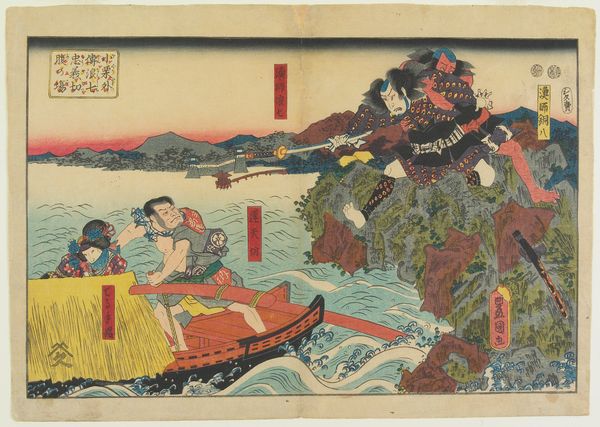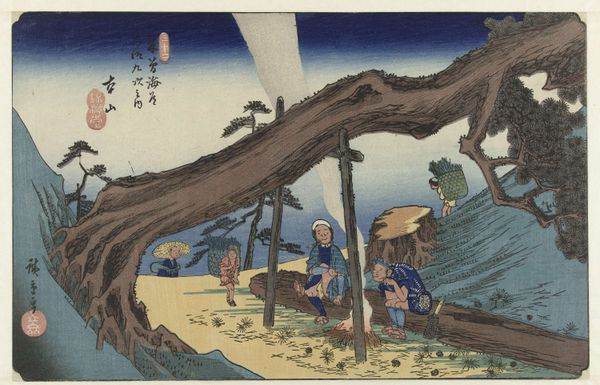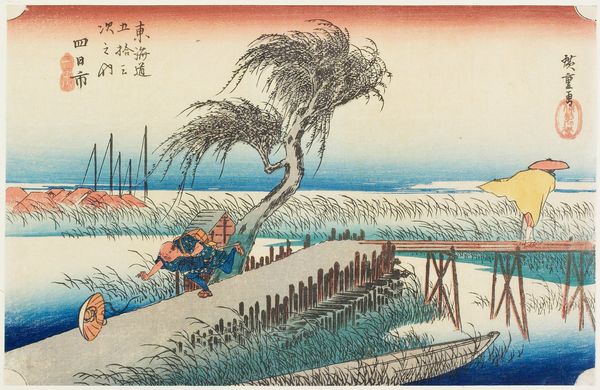
print, ink, woodblock-print
# print
#
landscape
#
ukiyo-e
#
ink
#
woodblock-print
#
genre-painting
Dimensions: 8 3/4 × 13 9/16 in. (22.2 × 34.4 cm) (image, sheet, horizontal ōban)
Copyright: Public Domain
Curator: Look at this remarkable ukiyo-e print by Utagawa Hiroshige, entitled “Okitsu,” dating to about 1832-1833. It’s a woodblock print rendered in ink, currently residing here at the Minneapolis Institute of Art. What catches your eye first? Editor: Well, immediately, the weight. The weight of the whole scene feels off-kilter, visually and thematically. That huge rock formation looms over everything, casting this almost oppressive shadow, while a bunch of tiny figures lug some dignitary around in a palanquin. There's a real disparity in scale and power at play, isn't there? Curator: Absolutely. The rock, or rather, the boulders, dominate the pictorial space—evoking a sense of permanence, even imposing authority. Note how it dwarfs not just the people, but the implied narrative. It also contrasts quite vividly with the relatively ephemeral subject of human travel. This contrast can evoke a sense of wonder in the scale and indifferent attitude of Nature against the everyday activities of common people. Editor: It's true. And I love how Hiroshige captures this tension, like some ancient god casually observing the petty dramas of mortals. And beyond that symbolic load, the execution itself…it’s just so serene in color yet it makes you feel uneasy, if that makes any sense. That pale, almost faded blue wash he uses for the water, and that pink blush on the horizon. It suggests peace, but juxtaposes dramatically with this looming presence, maybe even of tyranny. Curator: Precisely. This blending is archetypal in Eastern thought. Consider that this is not just an artistic choice, but embedded with philosophical roots. Ukiyo-e often carries layers of meaning, playing with visual and symbolic metaphors to suggest the fleeting nature of pleasure, but also deeper connections with nature and mortality. It’s about seeing the transient within the eternal. It becomes a story about time, power, and how these things impact one another. The rock, then, isn’t just a geological feature, it’s also a reminder. Editor: I get that—that it is a lot deeper than just this lovely day with people moving through water in a funny scene. Curator: Exactly, "Okitsu" speaks softly, but with the enduring strength of the rock, doesn't it? Editor: Yes. It's a beautifully balanced meditation on transience and what outlasts us. I will never look at a bunch of people trekking along in a boat in quite the same way again.
Comments
No comments
Be the first to comment and join the conversation on the ultimate creative platform.

